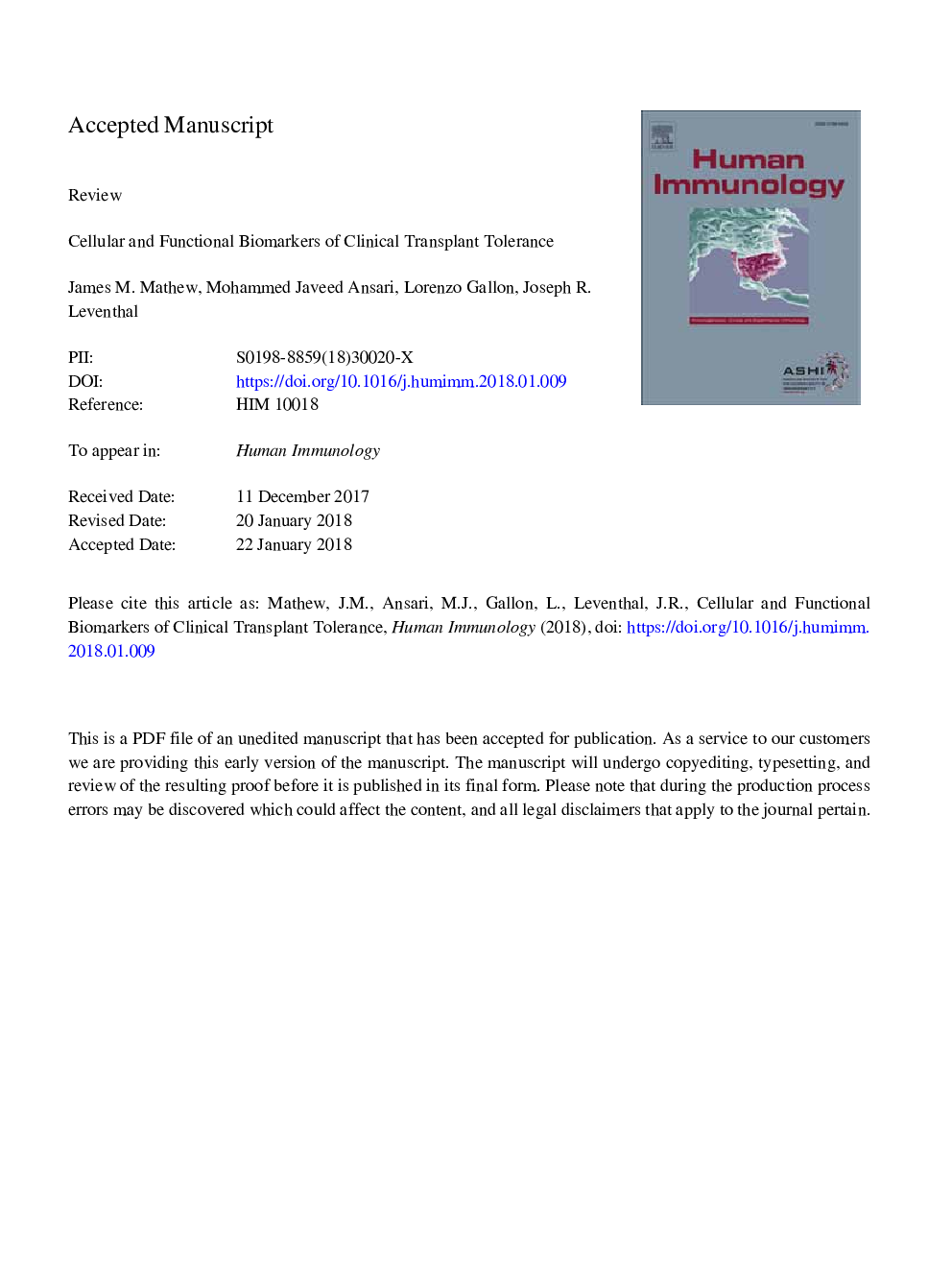| Article ID | Journal | Published Year | Pages | File Type |
|---|---|---|---|---|
| 8737626 | Human Immunology | 2018 | 37 Pages |
Abstract
Development of tolerance protocols requires assays or biomarkers that distinguish tolerant recipients from non-tolerant ones to be established. In addition, a thorough understanding of the plausible mechanisms associated with clinical transplant tolerance is necessary to take the field forward. Unlike the majority of molecular signature analyses utilized by others, the emphasis of this article is on the cellular and functional biomarkers of induced transplant tolerance. Immunity to an organ transplant is very complex, comprised of two broad categories - innate and acquired or adaptive immune responses. Innate immunity can be avoided by eliminating or preventing ischemic injuries to the donor organ and tolerance at the level of adaptive immunity can be induced by infusions of a number of cellular products. Since adaptive immune response consists of inflammatory hypersensitivity, cellular (cytotoxic and helper) and humoral aspects, all these need to be measured, and the recipients who demonstrate donor-specific unresponsiveness in all can be considered tolerant or candidates for immunosuppression minimization and/or withdrawal. The mechanisms by which these agents bring about transplant tolerance include regulation, anergy, exhaustion, senescence and deletion of the recipient immune cells. Another proven mechanism of tolerance is full or mixed donor chimerism. However, it should be cautioned that non-deletional tolerance can be reversed.
Keywords
PMNMSCCMLCyTOFHSPsTLRCTLA-4CNIPRRDHSCDSATEXPRAELISPOTTregsHMGB-1CFSEGvHDBTLAB and T lymphocyte attenuatorTNFRCPMBasic leucine zipper transcription factorPD-L1MLRFOXP3CTLLAG-3KLRG1PD-1IL-BATFDAMPsnatural killerdonor-specific antibodiespanel reactive antibodiesHuman leukocyte antigenHLAdamage-associated molecular patternsEnzyme-linked immunospotinterleukin-BregsCellular biomarkersLDAToleranceTim-3Serum amyloid P componentforkhead box P3T cell exhaustionMesenchymal stem cellsregulatory B cellsRegulatory dendritic cellsRegulatory T cellscounts per minuteSAPcytotoxic T lymphocyteMHCmajor histocompatibility complexlimiting dilution analysisbone marrowcalcineurin inhibitormixed lymphocyte reactionhigh mobility group box-1 proteincytotoxic T-lymphocyte-associated protein 4Heat-shock proteinsC-reactive proteinCRPClinical transplantationGraft versus host diseaseLymphocyte activation gene 3carboxyfluorescein succinimidyl estertumor necrosis factor receptorpattern recognition receptorsToll-like receptors
Related Topics
Life Sciences
Immunology and Microbiology
Immunology
Authors
James M. Mathew, Mohammed Javeed Ansari, Lorenzo Gallon, Joseph R. Leventhal,
